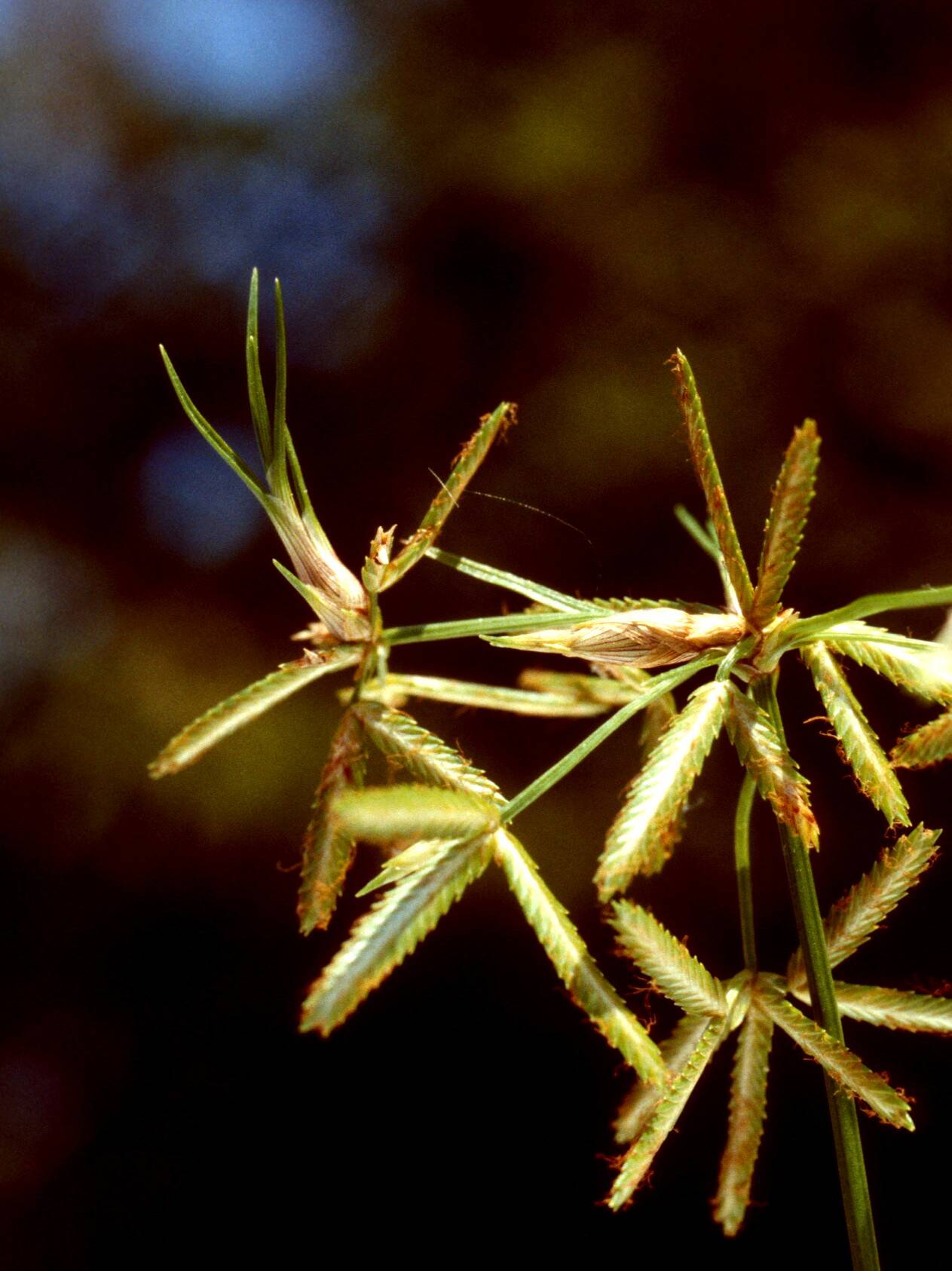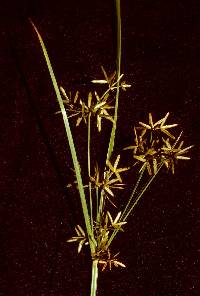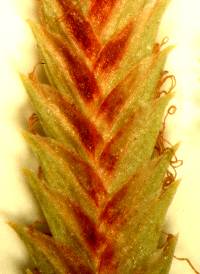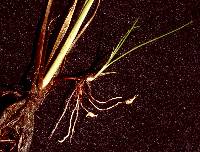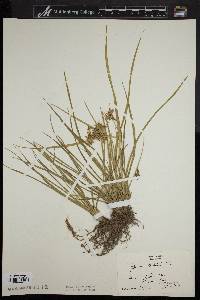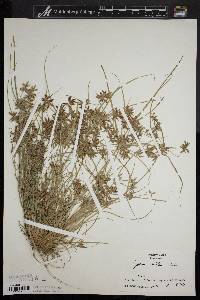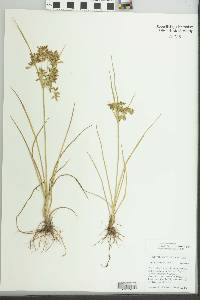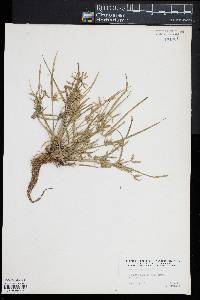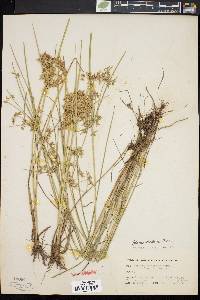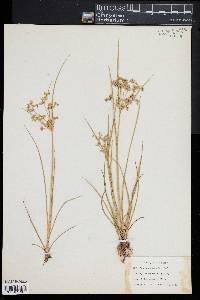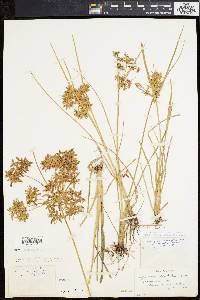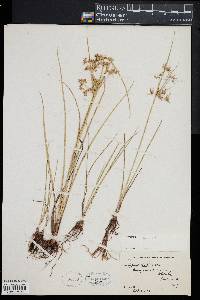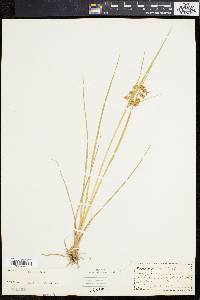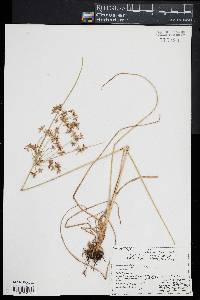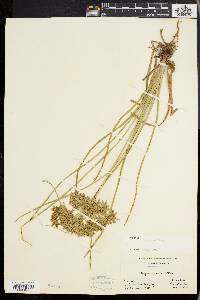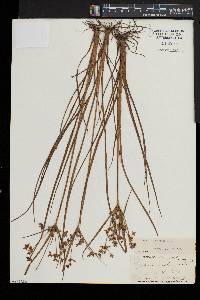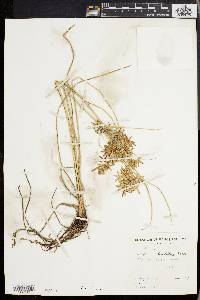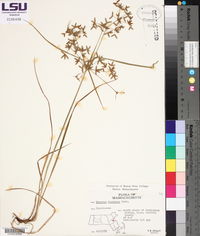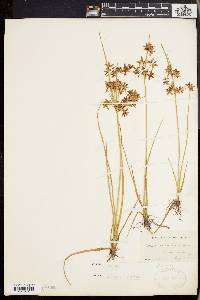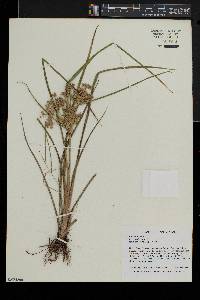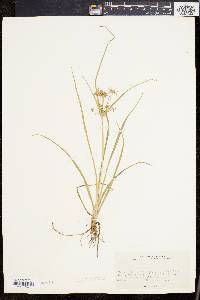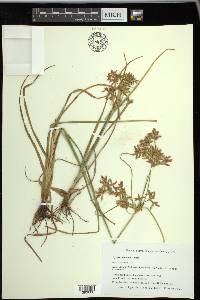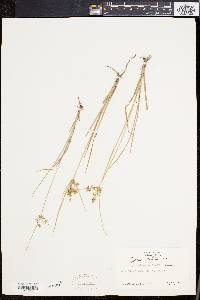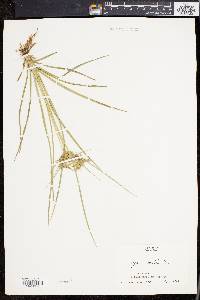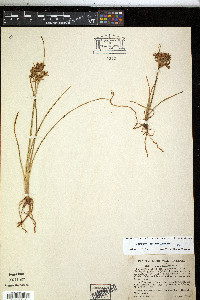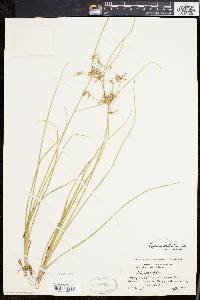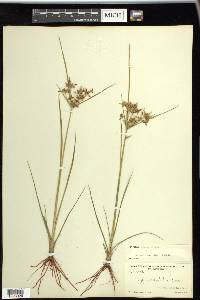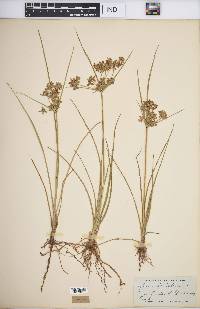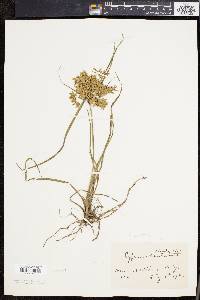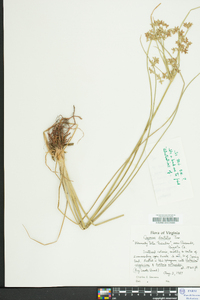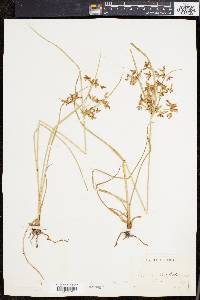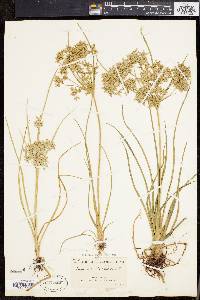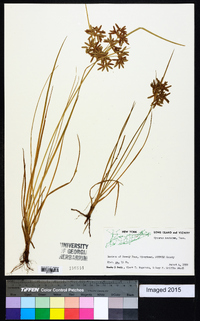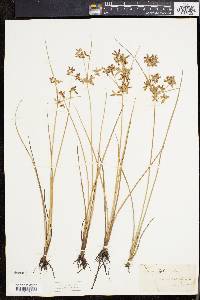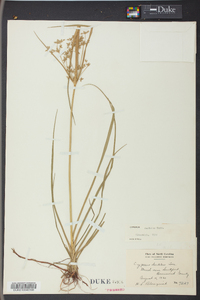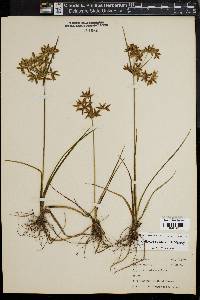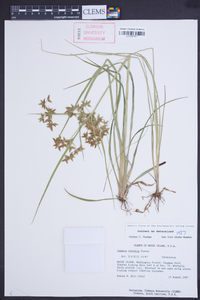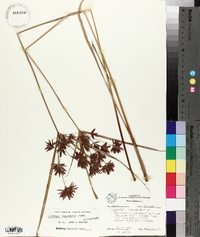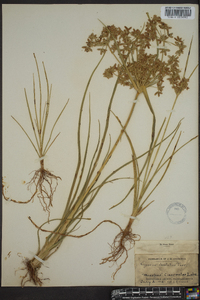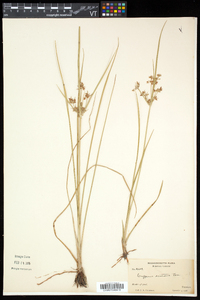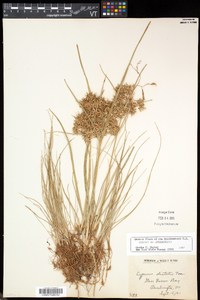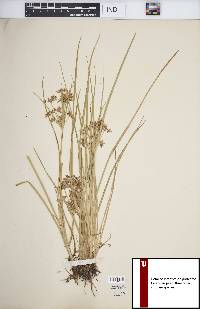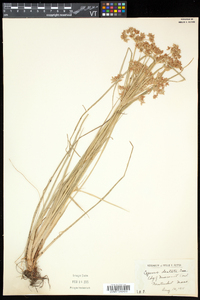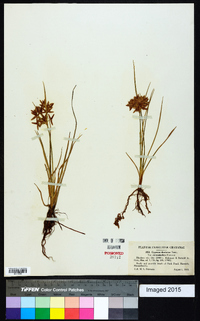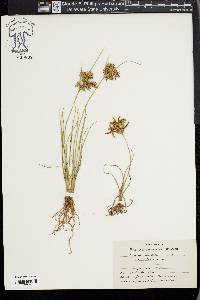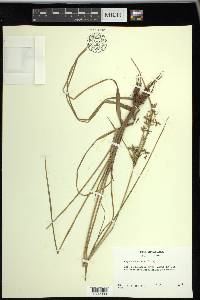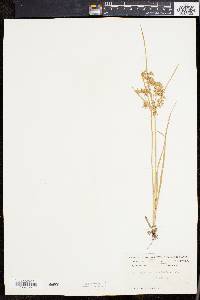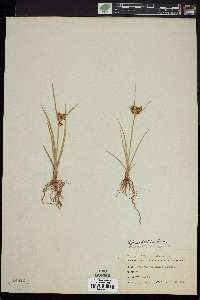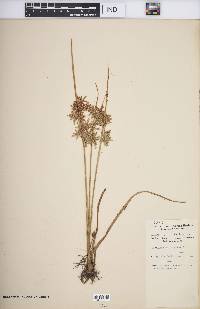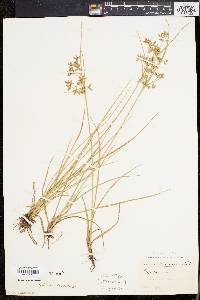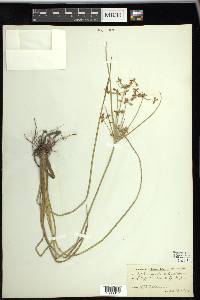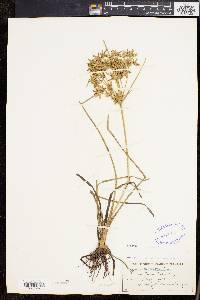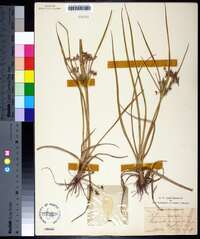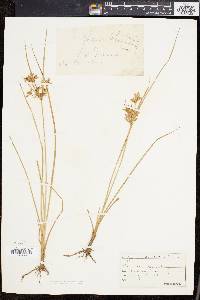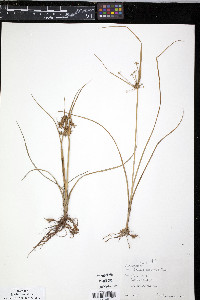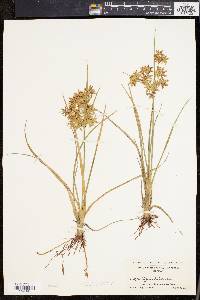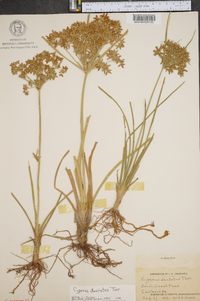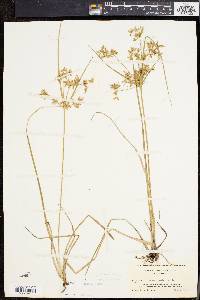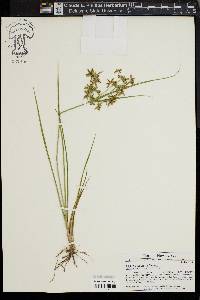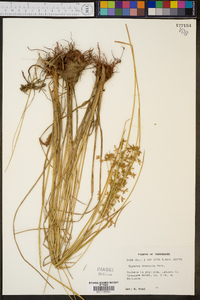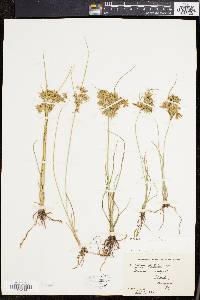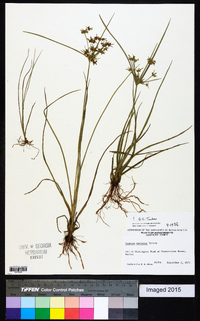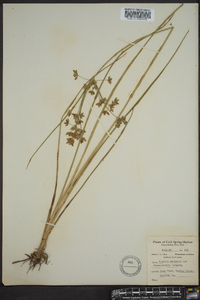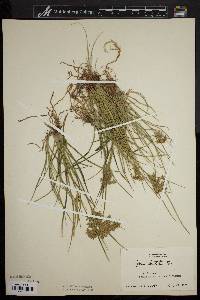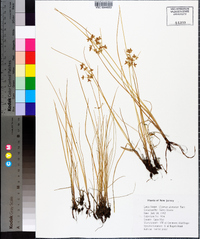
|
|
|
|
Family: Cyperaceae
Toothed Flat Sedge, more...toothed flatsedge
[Cyperus dentatus var. ctenostachys Fernald] |
Herbs, perennial, cespitose, rhizomatous; stolons tuberiferous, 1-10 cm. Culms trigonous, 8-50 cm × 1-3 mm. Leaves flat or V-shaped, 10-40 cm × 2-5 mm. Inflorescences: heads digitate, 8-18 mm diam.; rays 4-9, 1-8 cm; 2d order rays 0.5-2 cm; bracts 3-5, ± horizontal, flat, 1-20 cm × 1-4 mm. Spikelets commonly proliferous, 2-6, linear to oblong, compressed, 3-24 × 2-2.5 mm; floral scales 3-20(-50), reddish brown, laterally 1-3-ribbed, ovate, 2-2.5 × 1.5-2 mm. Flowers: stamens 3; anthers 1.5 mm; styles 1 mm; stigmas 1.5 mm. Achenes reddish brown, sessile, obovoid, 0.8-1 × 0.4-0.5 mm, apex obtuse, scarcely apiculate, surfaces glabrous. Fruiting summer. Emergent sandy, peaty, or gravelly shorelines; 0-600 m; N.B., N.S., Ont., Que.; Conn., Del., D.C., Ind., Maine., Md., Mass., N.H., N.Y., N.C., Pa., R.I., S.C., Tenn., Vt., Va. The report of Cyperus dentatus from West Virginia (M. V. McGivney 1938) is erroneous; the cited specimen was from New Jersey (Gutenberg s.n. 1886, US) (M. Strong, pers. comm.).
Perennial herb with short rhizomes and runners, tufted 10 cm - 0.5 m tall Leaves: numerous, basal, alternate, 10 - 40 cm long (about equal to the culm), 2 - 5 mm wide, flat or V-shaped in cross-section, linear, parallel-veined, keeled beneath, with a sheathing base that encloses the stem. Inflorescence: consisting of terminal spikes, subtended by spirally arranged leafy bracts. Bracts three to five, more or less horizontal, unequal, 1 - 20 cm long, 1 - 4 mm wide, flat. Rays (branches of inflorescence) four to nine, usually branched above, 1 - 8 cm long (upper ones 0.5 - 2 mm long). Spikes short, 1 - 3 cm in diameter, palmate, consisting of two to six spikelets. Flowers: minute, in the axil of a floral scale, lacking sepals and petals. Stamens three, exserted. Anthers about 1.5 mm long. Pistil one. Style to 1 mm long. Stigma to 1.5 mm long. Fruit: a one-seeded achene, stalkless, reddish brown, about 1 mm long and 0.5 mm wide, reverse egg-shaped and three-angled with a blunt apex that bears a scarce, slender point. Seed with a thin, non-adherent wall. Culm: solitary, 10 cm - 0.5 m long, 1 - 3 mm wide, triangular in cross-section, solid. Spikelets: 3 - 24 mm long, 2 - 2.5 mm wide, flattened, linear to oblong, subtended by two small bracts, bearing bulblets, with three to twenty floral scales. Scales two-ranked, reddish brown with a prolonged-pointed midrib, 2 - 3 mm long, 1.5 - 2 mm wide, egg-shaped, one- to three-ribbed, lowest one empty. Similar species: No information at this time. Flowering: late July to late August Habitat and ecology: Local in wet, sandy areas and in marshes. Occurence in the Chicago region: native Etymology: Cyperus is the ancient Greek word for sedge. Dentatus means toothed. Author: The Morton Arboretum Perennial from short rhizomes ending in tubers; stems solitary, 1-5 dm; lvs numerous, 2-5 mm wide, about equaling the stem; bracts 3-5, the longer surpassing the infl; rays numerous, 1-5(-10) cm, often branched above; spikes short, loosely hemispheric, 1-3 cm wide; spikelets few to many, flattened, 3-15 mm, with 8-25 fls; some spikelets usually proliferated, bearing much elongate scales; scales normally ovate, 2-3 mm, the midvein prolonged as a short stout point; rachilla wingless; achenes obovoid trigonous, 1 mm or less, half as thick; 2n=34. Sandy shores; Que. and N.S. to n. N.Y., s. to W.Va. and N.C.; nw. Ind. Gleason, Henry A. & Cronquist, Arthur J. 1991. Manual of vascular plants of northeastern United States and adjacent Canada. lxxv + 910 pp. ©The New York Botanical Garden. All rights reserved. Used by permission. From Flora of Indiana (1940) by Charles C. Deam This Coastal Plain species is found in only three counties. It is local but usually common where it is found. It grows in moist, sandy soil in ditches through marshes and on the wet, sandy shore of Bass Lake in Starke County. Specimens with 15-40- flowered spikelets have received a varietal name, but since both short and long spikelets are found on the same plant it is obvious that the variety is only a luxuriant form of the species. |
This project was made possible in part by the Institute of Museum and Library Services [MG-70-19-0057-19].
Powered by Symbiota

